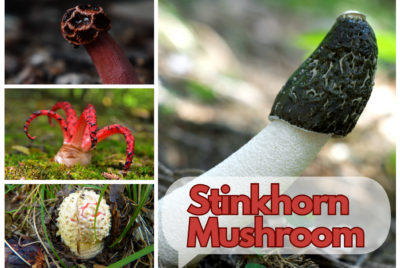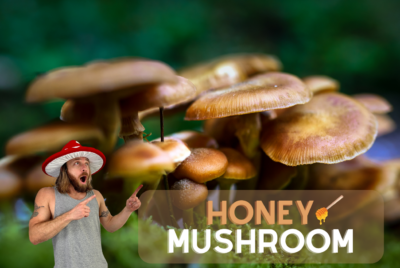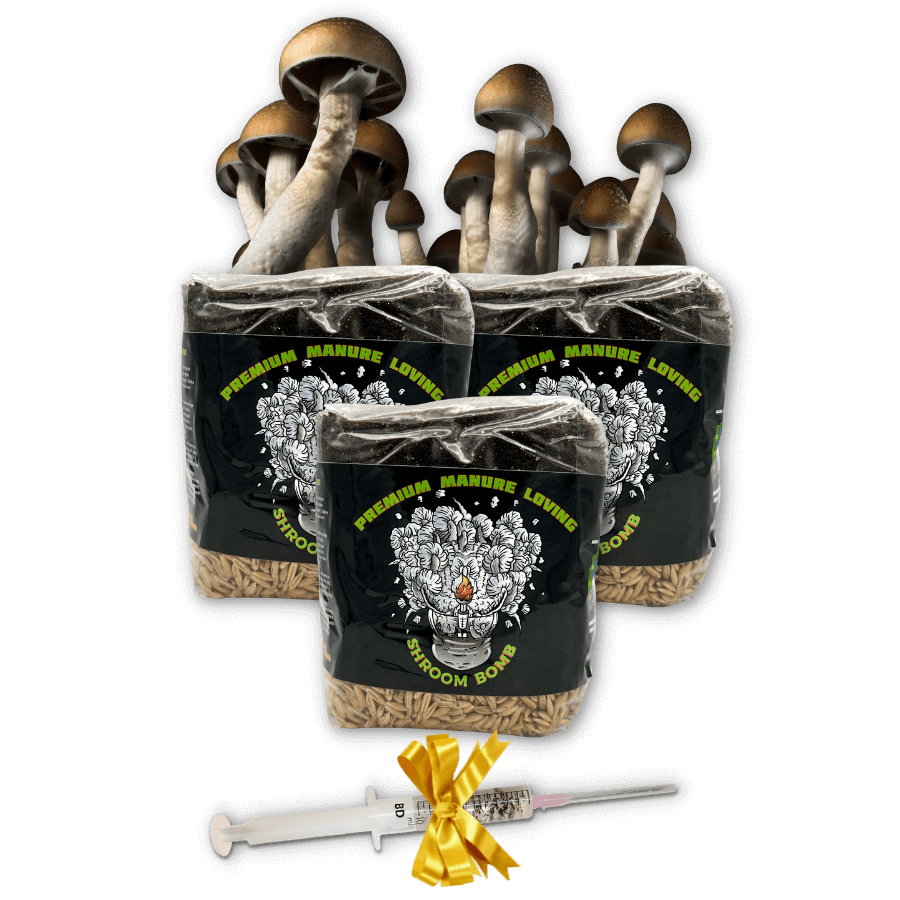Mushroom enthusiasts and foragers are often captivated by the diverse and mysterious world of fungi. Among…
Hen of the Woods Mushrooms Identification and Edible Look-Alikes

Hen of the Woods Identification—the best way how to identify Hen of the Woods is by knowing its key features, habitat, and fruiting time of the year. Also, by learning the distinguishing features of its lookalikes.
As a popular edible wild mushroom in North America, this fall fungus is highly valuable for both its taste and health benefits.
In this article, we will go over the most important features for Hen of the Woods identification and why it is the most sought-after functional mushroom worldwide.
- Appearance
- Where and When to Find
- Harvesting
- Lookalikes
- Health Benefits
Hen of the Woods Identification Tips
Hen-of-the-woods go by several other names: Maitake in Japanese, HuiShuHua in Chinese, Ram’s Head, Sheep’s Head, King of all Mushrooms, and many more.
For centuries, it has been one of the most highly regarded medicinal mushrooms first used in Asian traditional medicine.
What Does Hen of the Woods Mushroom Look Like?
-
Resemblance

It is a polypore mushroom that grows at the base of hardwood trees.
Polypores ('many pores') are a group of fungi that form large fruiting bodies with pores or tubes on the underside. Polypores are also called bracket fungi or shelf fungi and are characterized by their woody, shelf- or bracket-shaped, or occasionally circular fruiting bodies that are called conks.
Hen of the Woods mushroom gets its name from resembling a hen sitting on its nest. In Japan, it is called “Maitake” which translates to “dancing mushroom” because of its semblance to the waving kimono sleeves of dancing women.
It was believed that Japanese commoners would dance for joy upon finding this highly prized mushroom. In ancient Japan, maitake was used as currency and was worth its weight in silver. Read more about Maitake by Gale Encyclopedia of Alternative Medicine
The scientific name for Maitake is Grifola frondosa. Grifola means “something intricate or braided” which resembles its appearance; while frondosa, means “covered with leaves” or “leaf-like,” referring to its umbrella-like fruiting bodies.
Some also believe it is named after the griffin—a mythological creature with an eagle’s head and wings and a lion’s body.
-
Appearance: stem, cap, underside, pores, spores

This mushroom grows in clusters—from a single-based white fibrous stem from which leaf-like caps/fronds grow.
It has ruffled gray-brown caps with a whitish zone in the middle and sometimes white edges.
The caps have a succulent and fairly firm texture, and the flesh does NOT change color when cut. Not all maitakes look evenly tan; some have darker brown coloration near the edges.

One factor that affects the color of the caps is the amount of sunlight they receive. Exposure to direct sunlight turns the caps darker.
Also, when the caps are wet (from the rain or fog), the brown colors may look even. The leathery texture of the caps retain the moisture making it look shiny or waxy.

The underside is white or cream with tiny holes or pores (no gills since it’s a polypore) that release cream-colored spores as they mature. And it has white spore print.
-
Cap and Cluster: size and weight
Each cap width is 2 to 6 inches, while each cluster width can be 4 to 36 inches!
A cluster has an average weight of 5 to 10 pounds but can grow up to 100 pounds!
Larger than usual maitake mushrooms turn a lighter tan brown or grey color as they mature.
Where and When to Find Hen of the Woods?
-
Geographic Location and Habitat

This mushroom can be found growing in the northern temperate forest including northeastern United States, Eastern Canada, Japan, China, and throughout Europe.
Just as its name implies, it is a wood-loving mushroom. Usually, it grows at the base of dead or dying hardwood trees or stumps.
Maitakes camouflage well with the surrounding trees so you need to look very closely when hunting.

Particularly, its favorite hosts are white and red oak and maple trees. But it may also grow on elm, beech, chestnut, and sycamore trees.
People who have been hunting edible wild Maitake mushrooms for years say that they always find clusters within 200 feet of the water source, whether that be freshwater or saltwater.
-
Identify Hen of the Woods Growing Season
Hen of the Woods is an early fall mushroom. The fruiting season usually starts from mid-August or September to mid-November and may vary depending on location and conditions.
Experienced maitake hunters say that they usually find this mushroom on the first full moon in September or on the October full moon.
The fruiting body of this maitake takes longer to appear than other mushrooms. It takes around 2 to 3 years for the mycelium to colonize its habitat and produce fruiting bodies.
But once the mycelium has established itself in its habitat, it will fruit every year in the same place.
During its season, clusters may grow all at once or sometimes come out in an interval of two or three weeks.
Harvesting Hen of the Woods Mushrooms

When to Harvest Hen of the Woods? It is best harvested young and tender, but not too young. Too old Hens tend to be tough and leathery which is not palatable.
You will most likely first notice a developing cluster after Hen of the Woods identification on its post-brain stage when it’s already the size of a fist.
However, that stage is too early to harvest as there are no defined caps yet. The maitake will still undergo the cauliflower stage and cluster flower stage.
So what you should go after is the mature mushroom stage when the cluster flower already develops into defined caps.
Hen of the Woods Look-Alikes
There are hardly any poisonous mushroom look alikes for the identified Hen of the Woods mushroom. But one lookalike would probably be the Black-staining Polypore (Meripilus sumstinei) which is an edible mushroom.
Black-Staining Polypore (Meripilus giganteus) a.k.a. “Rooster of the Woods”

Similarly, this mushroom grows in clusters with wavy brownish caps at the base of hardwood trees. Some growers jokingly refer to this lookalike as the “Rooster of the Woods.”
Meripilus giganteus which is a strictly European species is also commonly referred to as the Black-staining Polypore. Blackening polypores have larger caps that have more concentric layers of cream, brown, and dark brown.
Unlike Hens with usually white edges when mature, roosters develop black edges. Also, one notable feature of this lookalike is the cap turns black or gray when cut.
However, staining is not instantaneous. You need to wait for about 10 to 40 minutes to observe the grayish to black coloration of the cap’s flesh.
Black-staining Polypore usually fruits in summer and fall (earlier than maitake) and are abundant in the east of the Rocky Mountains.
Hen of the Woods vs Chicken of the Woods?
Though they are both edible polypores that sound synonymous, Chicken of the Woods and Hen of the Woods are not the same.
Chicken of the Woods is a mushroom from the Laetiporus genus, while Hen of the Woods is from the genus Grifola.
The simplest way to tell these two mushrooms apart is by color.
Chicken of the woods is easy to identify with its caps that are usually thicker and bright orange to peachy orange in color, and underside pores are orangey or yellowish.
What Are Hen of the Woods Health Benefits?
Current research studies suggest that Maitake may help in certain illnesses such as cancer as an adjunctive treatment and it can also lower bad cholesterol. Aside from its curative properties, the Hen of the Woods mushroom is also rich in antioxidants.
Key Takeaways on the Hen of the Woods Identification
- Hen of the Woods (Grifola frondosa) a.k.a. Maitake is a fall mushroom abundant in the northeastern states.
- It is a polypore that grows in clusters in hardwood trees, with the notable feature of ruffled grayish-brown caps.
- It’s best to harvest Maitake when it’s young and tender with defined caps.
- Black-staining Polypore (M. sumstinei) is a Maitake lookalike which you can tell apart by cutting a cap mid-way and observing if it turns grayish black within 10-40 minutes.
- Also Chicken of the Woods which has yellow-orange caps is different from Maitake.
Aside from it being an exciting edible wild mushroom to hunt, the Hen of the Woods (Maitake) mushroom is rich in nutrients and has amazing cancer-fighting and cholesterol-lowering properties!
Happy Mushroom Hunting! 🙂
Frequently Asked Questions
Hen of the Woods (Grifola frondosa) is an edible mushroom with overlapping, fan-like caps resembling a hen’s feathers. Found at the base of trees, it’s valued for its savory flavor and potential health benefits. Used in Asian medicine and Western cuisine, it’s known for its umami-rich taste and textured appearance.
Hen of the Woods mushrooms can be identified by their large, overlapping, fan-shaped caps with a grayish-brown color and ruffled texture. They grow at tree bases, often oaks. Accurate identification is crucial; consult an expert or rely on reputable sources due to potential confusion with toxic species.
Yes, there are poisonous mushrooms that resemble Hen of the Woods. The toxic Berkeley’s Polypore shares a similar appearance. Proper identification is vital to avoid consuming dangerous species; seek guidance from experts or trustworthy sources.
Yes, Hen of the Woods mushrooms are edible and valued for their flavor.
The mushroom is called “Hen of the Woods” due to its appearance. Its overlapping, layered caps resemble a fluffed-up hen’s feathers or a bird roosting on a tree base. This name reflects the mushroom’s distinctive and recognizable growth pattern.
Hen of the Woods mushrooms often grow at the base of deciduous trees, particularly oaks. They have a symbiotic relationship with these trees, forming mycorrhizal connections that benefit both the mushroom and the tree. Other hardwood trees like maples and beeches can also host Hen of the Woods.
Hen of the Woods mushrooms (Grifola frondosa) can grow relatively quickly under the right conditions. They may reach a noticeable size within a week or two, especially during periods of favorable moisture and temperature. However, growth rates can vary based on factors like tree health, environmental conditions, and mushroom age.
Yes, Hen of the Woods (Grifola frondosa), a type of mushroom, typically grows back annually. It’s a perennial fungus that often reappears in the same location year after year, particularly in the fall months. However, the growth and yield can vary depending on environmental conditions and the health of the host tree.
Hen of the Woods mushrooms can be found in specialty grocery stores, farmers’ markets, or online retailers that sell fresh and cultivated mushrooms. It’s essential to ensure the source is reputable. If foraging, consult with local experts to learn safe harvesting practices and to avoid toxic look-alike species.











[…] Supply hyperlink […]
[…] Hen of the Woods Identification Tips | Edible Wild Mushroom Hunt […]
[…] Hen of the Woods Mushroom Identification Guide says: November 28, 2022 at 2:58 pm […]